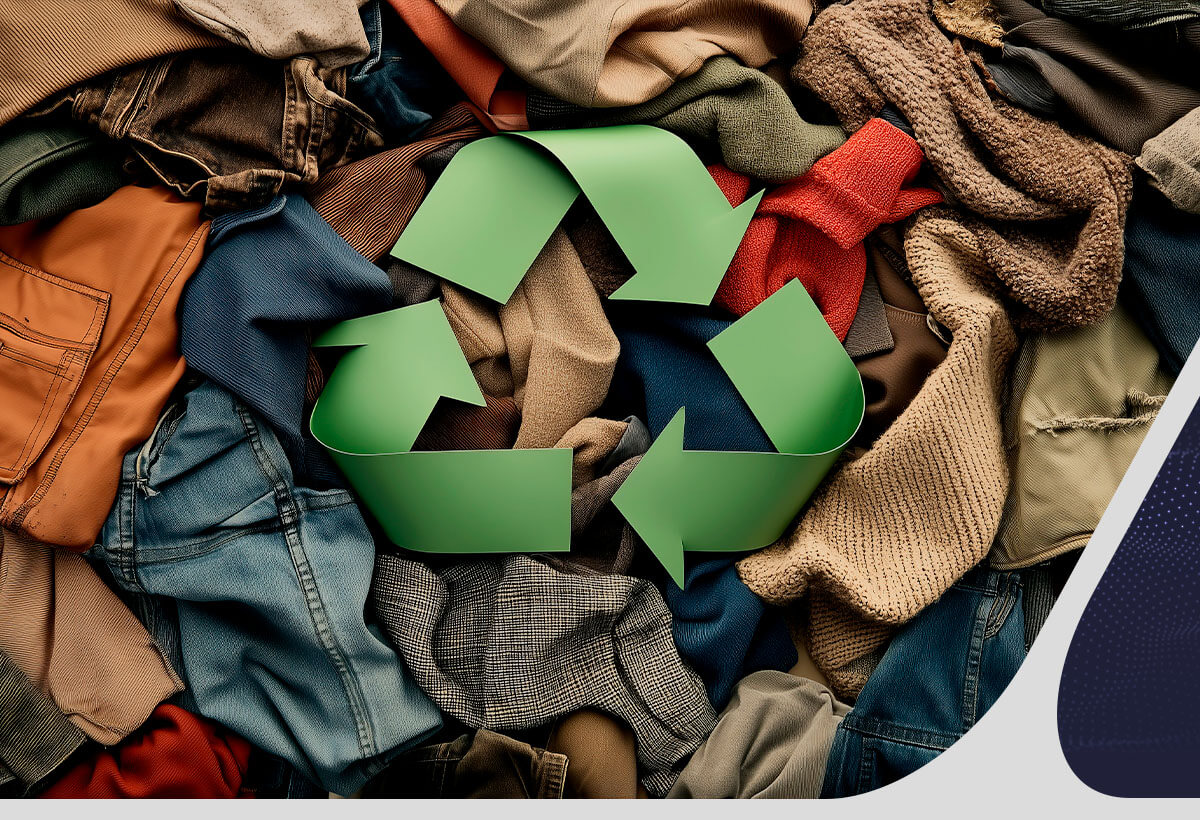Upcycling, though not a new concept, has gained popularity in recent years within the textile industry. One primary reason is the increasing environmental awareness and the evolution of the fashion industry.
Curious about what upcycling really means and why it’s becoming such a big deal?
Discover how this practice originated and why your industry should embrace this transformation.
Enjoy the read!
What is upcycling?
Upcycling is the process of transforming materials that would otherwise go to waste, such as leftover fabric or old pieces, into new, personalized products with added value.
This approach integrates sustainability, creativity, and cost reduction, enabling the intelligent reuse of items with minor defects, thereby eliminating waste and generating unique products.
This strategy has already been embraced by leading fashion retail brands. Renner‘s Re Jeans line is an exemplary model of this practice, as it uses leftover and used fabrics to create new garments, including jackets, skirts, and shorts.
The brand selects specific parts of the pieces, which are shredded and transformed into a new textile raw material. This process preserves the fashionable and accessible appeal of fast fashion, but with a significantly lower environmental impact.
Each item is unique, reflects the history of the original material, and helps reduce the environmental impact of textile production.
Recycling x upcycling
It is important to recognize the distinction between “recycling” and “upcycling”. In the recycling industry, components are frequently transformed into lower-grade materials.
Upcycling, on the other hand, enhances the product, boosting its perceived and commercial value.
>> Read also: Fast Fashion: what are the impacts on textile production?
How did the concept come about and gain traction in the market?
The term upcycling was first used around 1994 by German environmentalist Reine Pilz. After 8 years, Cradle to Cradle author William McDonough popularized the term.
Upcycling can also be applied in areas such as art, decoration, and architecture. Despite this, it is in the fashion industry that it makes one of the biggest impacts.
After all, it has great potential to profoundly transform the way parts are created and produced.
Since then, it has been a concept that has gained increasing popularity within the market. In today’s market, consumers are increasingly seeking out sustainable products and brands, particularly in the fashion sector.
And it is no coincidence, since this industry is responsible for about 10% of global greenhouse gas emissions (according to Exame) and generates more than 4 million tons of textile waste per year (according to CNN).
Consequently, more circular business models have emerged. It is estimated that they will account for 23% of the global fashion market by 2030, with a US$700 billion market value.
Furthermore, statistics from 123 Ecos reveal that:
- In 2022, investments in upcycling startups reached US$1.2 billion, marking a 45% increase compared to 2021.
- The global market for upcycled goods is anticipated to reach $21.8 billion by 2026.
Why should the industry consider implementing upcycling?

Upcycling has emerged in the fashion industry not only as a means of innovating production but also to benefit the environment and strengthen local communities.
An inspiring example is LATAM’s project in partnership with the sustainable fashion brand, Revoada, which repurposed 15 tons of old employee uniforms to create new pieces.
The initiative has generated income for over 3,000 women, demonstrating the potential to unify sustainability, innovation, and social transformation through a single action.
Indeed, one of the most significant challenges in implementing upcycling on a large scale is the need for skilled labor to customize pieces in large quantities.
However, the good news is that technology can serve as an ally in this process. It facilitates:
- Optimize production;
- Minimize waste;
- – Broaden the adoption of sustainable practices in the fashion industry.
Investing in upcycling is a strategic move that can provide a competitive edge in the market. The brand positions itself as the protagonist of a new era of fashion, one that is more conscious, responsible, and aligned with the values of today’s consumer.
What is the best way to start implementing upcycling in the fashion industry?
Implementing upcycling is not merely a passing trend. It addresses the urgent needs for sustainability, innovation, and social responsibility that are shaping the present and future of fashion.
Despite the challenges of large-scale customization in this sector, textile technology has rendered this process attainable.
Are you interested in learning how to implement upcycling in your company using technology? Download our free eBook now and explore practical methods for turning waste into valuable opportunities.


